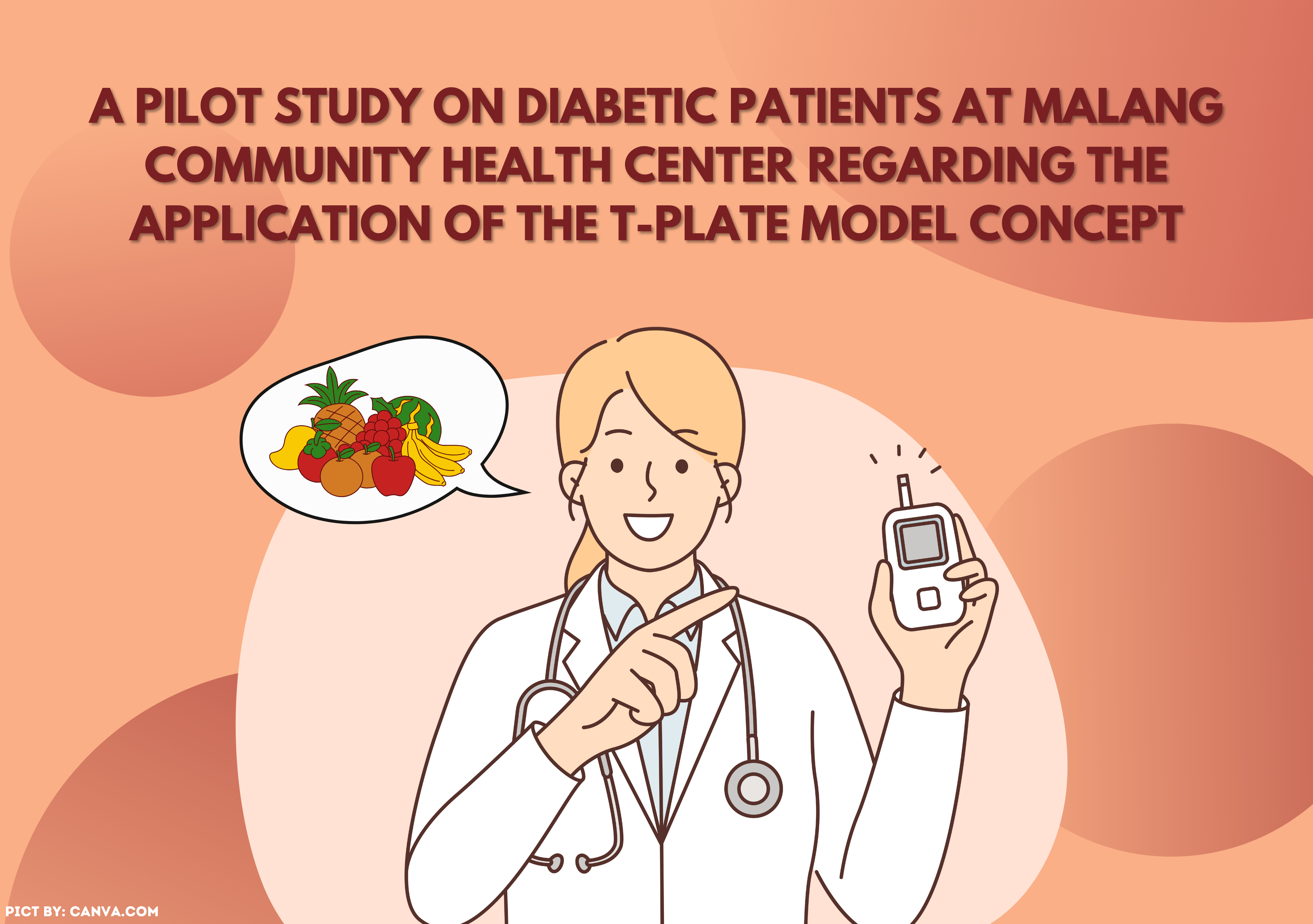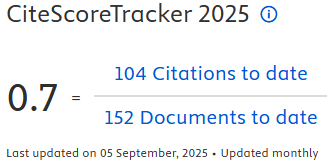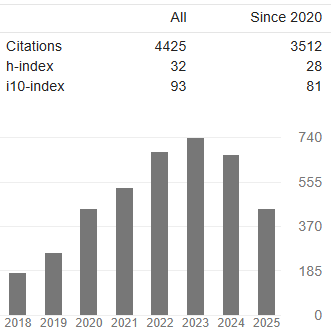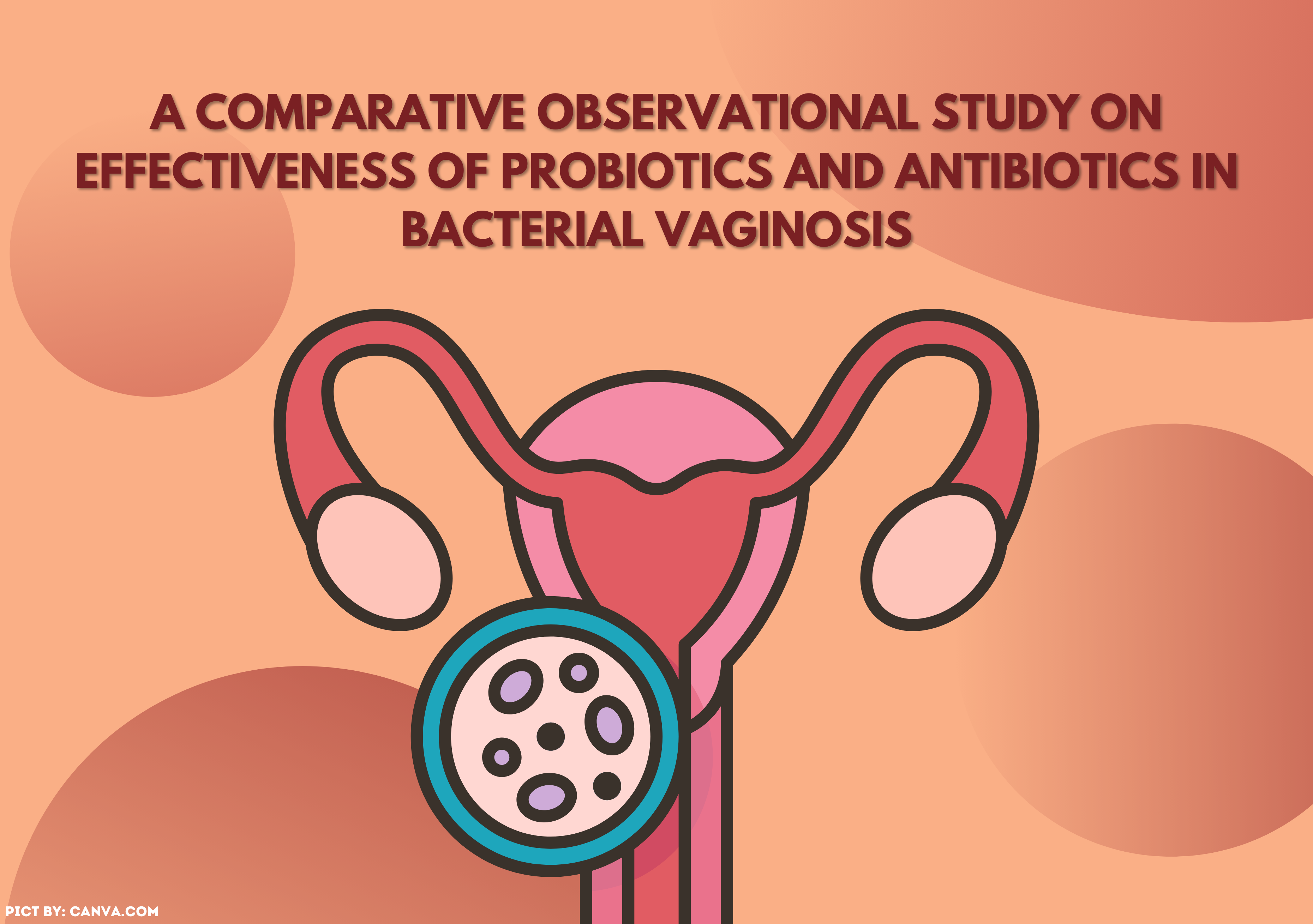A PILOT STUDY ON DIABETIC PATIENTS AT MALANG COMMUNITY HEALTH CENTER REGARDING THE APPLICATION OF THE T-PLATE MODEL CONCEPT

Introduction: Diabetes mellitus is a comorbidity that is often found in Covid-19 patients with a 3.9-fold risk of death. Data from the Malang City Health Office shows an increase in the number of diabetes patients by 1.2% each year. In Indonesia, 3J (right amount, type, and eating time) has become the principle of diabetes diet therapy, but in practice, it is still challenging to apply independently. Aims: Investigating the T-Plate Model as a simple eating guide for people with diabetes mellitus. Methods: This pilot study included 18 diabetic patients at some Primary Health Care who were 50–70 years old and had a BMI more than 23 kg/m2. The participant was split into two groups, with nine people in the (C) group eating according to the T-Plate Model, and others in the (T) group eating according to the T-Plate Model after eating fruit. After a 3-month treatment period, BMI, blood pressure, carbohydrate, and fiber consumption were assessed. Mean BMI and blood pressure were examined using paired sample t-tests (p 0.05). Results: Both groups' BMIs fell into the category of obesity level 1 before to treatment periods: C group (26.09+3.13 kg/m2) and T group (27.15+ 4.15). We discovered significant blood pressure and BMI variations in the T group at the end of intervention periods (p 0.05). Nevertheless, systolic blood pressure was different in the C group (p 0.05). Conclusions: It may be inferred that using the T-Plate Model with the addition of fruit initially can lower blood pressure and BMI.
Abbasnezhad, A., Falahi, E., Gonzalez, M.J., Kavehi, P., Fouladvand, F. and Choghakhori, R., 2020. Effect of different dietary approaches compared with a regular diet on systolic and diastolic blood pressure in patients with type 2 diabetes: A systematic review and meta-analysis. Diabetes Research and Clinical Practice, 163, p.108108. https://doi.org/10.1016/j.diabres.2020.108108
Al Mansour, M.A., 2019. The Prevalence and Risk Factors of Type 2 Diabetes Mellitus (DMT2) in a Semi-Urban Saudi Population. International Journal of Environmental Research and Public Health, 17(1), p.7. https://doi.org/10.3390/ijerph17010007
Algoblan, A., Alalfi, M. and Khan, M., 2014. Mechanism linking diabetes mellitus and obesity. Diabetes, Metabolic Syndrome and Obesity: Targets and Therapy, p.587. https://doi.org/10.2147/DMSO.S67400
Argano, C., Natoli, G., Mularo, S., Nobili, A., Monaco, M.L., Mannucci, P.M., Perticone, F., Pietrangelo, A. and Corrao, S., 2022. Impact of Diabetes Mellitus and Its Comorbidities on Elderly Patients Hospitalized in Internal Medicine Wards: Data from the RePoSi Registry. Healthcare, 10(1), p.86. https://doi.org/10.3390/healthcare10010086
Bae, J.P., Lage, M.J., Mo, D., Nelson, D.R. and Hoogwerf, B.J., 2016. Obesity and glycemic control in patients with diabetes mellitus: Analysis of physician electronic health records in the US from 2009–2011. Journal of Diabetes and its Complications, 30(2), pp.212–220. https://doi.org/10.1016/j.jdiacomp.2015.11.016
Bahat, G., Kilic, C., Topcu, Y., Aydin, K. and Karan, M.A., 2020. Fat percentage cutoff values to define obesity and prevalence of sarcopenic obesity in community-dwelling older adults in Turkey. The Aging Male, 23(5), pp.477–482. https://doi.org/10.1080/13685538.2018.1530208
Bansode, B. and Prasad, J.B., 2022. Burden of comorbidities among diabetic patients in Latur, India. Clinical Epidemiology and Global Health, 13, p.100957. https://doi.org/10.1016/j.cegh.2021.100957
Bawadi, H., Hassan, S., Shanbeh Zadeh, A., Sarv, H., Kerkadi, A., Tur, J.A. and Shi, Z., 2020. Age and gender specific cut-off points for body fat parameters among adults in Qatar. Nutrition Journal, 19(1), p.75. https://doi.org/10.1186/s12937-020-00569-1
Burger, K.N.J., Beulens, J.W.J., van der Schouw, Y.T., Sluijs, I., Spijkerman, A.M.W., Sluik, D., Boeing, H., Kaaks, R., Teucher, B., Dethlefsen, C., Overvad, K., Tjí¸nneland, A., Kyrí¸, C., Barricarte, A., Bendinelli, B., Krogh, V., Tumino, R., Sacerdote, C., Mattiello, A., Nilsson, P.M., Orho-Melander, M., Rolandsson, O., Huerta, J.M., Crowe, F., Allen, N. and Nöthlings, U., 2012. Dietary Fiber, Carbohydrate Quality and Quantity, and Mortality Risk of Individuals with Diabetes Mellitus. PLoS ONE, 7(8), p.e43127. https://doi.org/10.1371/journal.pone.0043127
Chobot, A., Górowska-Kowolik, K., SokoÅ‚owska, M. and Jarosz-Chobot, P., 2018. Obesity and diabetes-Not only a simple link between two epidemics. Diabetes/Metabolism Research and Reviews, 34(7), p.e3042. https://doi.org/10.1002/dmrr.3042
Choi, J.H., Cho, Y.J., Kim, H.-J., Ko, S.-H., Chon, S., Kang, J.-H., Kim, K.-K., Kim, E.M., Kim, H.J., Song, K.-H., Nam, G.E., Kim, K.I., and Committee of Clinical Practice Guidelines, Korean Society for the Study of Obesity (KSSO), Committee of Clinical Practice Guidelines and Committee of Food and Nutrition, Korean Diabetes Association (KDA), Policy Committee of Korean Society of Hypertension (KSH), Policy Development Committee of National Academy of Medicine of Korea (NAMOK), 2022. Effect of carbohydrate-restricted diets and intermittent fasting on obesity, type 2 diabetes mellitus, and hypertension management: consensus statement of the Korean Society for the Study of obesity, Korean Diabetes Association, and Korean Society of Hypertension. Clinical Hypertension, 28(1), p.26. https://doi.org/10.1186/s40885-022-00207-4
Clark, M.J. and Slavin, J.L., 2013. The Effect of Fiber on Satiety and Food Intake: A Systematic Review. Journal of the American College of Nutrition, 32(3), pp.200–211. https://doi.org/10.1080/07315724.2013.791194
Galicia-Garcia, U., Benito-Vicente, A., Jebari, S., Larrea-Sebal, A., Siddiqi, H., Uribe, K.B., Ostolaza, H. and Martín, C., 2020. Pathophysiology of Type 2 Diabetes Mellitus. International Journal of Molecular Sciences, 21(17), p.6275. https://doi.org/10.3390/ijms21176275
Giuntini, E.B., Sardá, F.A.H. and de Menezes, E.W., 2022. The Effects of Soluble Dietary Fibers on Glycemic Response: An Overview and Futures Perspectives. Foods, 11(23), p.3934. https://doi.org/10.3390/foods11233934
Henderson, G.C., 2021. Plasma Free Fatty Acid Concentration as a Modifiable Risk Factor for Metabolic Disease. Nutrients, 13(8), p.2590. https://doi.org/10.3390/nu13082590
Hervik, A.K. and Svihus, B., 2019. The Role of Fiber in Energy Balance. Journal of Nutrition and Metabolism, 2019, pp.1–11. https://doi.org/10.1155/2019/4983657
I. S. Sobczak, A., A. Blindauer, C. and J. Stewart, A., 2019. Changes in Plasma Free Fatty Acids Associated with Type-2 Diabetes. Nutrients, 11(9), p.2022. https://doi.org/10.3390/nu11092022
Indonesian Ministry of Health, n.d. Indonesia Basic Health Research 2018.
Ismail, L., Materwala, H. and Al Kaabi, J., 2021. Association of risk factors with type 2 diabetes: A systematic review. Computational and Structural Biotechnology Journal, 19, pp.1759–1785. https://doi.org/10.1016/j.csbj.2021.03.003
Kalmpourtzidou, A., Eilander, A. and Talsma, E.F., 2020. Global Vegetable Intake and Supply Compared to Recommendations: A Systematic Review. Nutrients, 12(6), p.1558. https://doi.org/10.3390/nu12061558
Kimura, Y., Yoshida, D., Hirakawa, Y., Hata, J., Honda, T., Shibata, M., Sakata, S., Uchida, K., Kitazono, T. and Ninomiya, T., 2021. Dietary fiber intake and risk of type 2 diabetes in a general Japanese population: The Hisayama Study. Journal of Diabetes Investigation, 12(4), pp.527–536. https://doi.org/10.1111/jdi.13377
Li, Q., Liu, C., Zhang, S., Li, R., Zhang, Y., He, P., Zhang, Z., Liu, M., Zhou, C., Ye, Z., Wu, Q., Li, H. and Qin, X., 2021. Dietary Carbohydrate Intake and New-Onset Hypertension: A Nationwide Cohort Study in China. Hypertension, 78(2), pp.422–430. https://doi.org/10.1161/HYPERTENSIONAHA.120.16751
Li, Y., Wang, H., Wang, K., Wang, W., Dong, F., Qian, Y., Gong, H., Xu, G., Li, G., Pan, L., Zhu, G. and Shan, G., 2017. Optimal body fat percentage cut-off values for identifying cardiovascular risk factors in Mongolian and Han adults: a population-based cross-sectional study in Inner Mongolia, China. BMJ Open, 7(4), p.e014675. https://doi.org/10.1136/bmjopen-2016-014675
Macek, P., Biskup, M., Terek-Derszniak, M., Krol, H., Smok-Kalwat, J., Gozdz, S. and Zak, M., 2020. Optimal cut-off values for anthropometric measures of obesity in screening for cardiometabolic disorders in adults. Scientific Reports, 10(1), p.11253. https://doi.org/10.1038/s41598-020-68265-y
Malang Head of Health Service, n.d. Malang City Health Profile in 2021.
Mancusi, C., Izzo, R., di Gioia, G., Losi, M.A., Barbato, E. and Morisco, C., 2020. Insulin Resistance the Hinge Between Hypertension and Type 2 Diabetes. High Blood Pressure & Cardiovascular Prevention, 27(6), pp.515–526. https://doi.org/10.1007/s40292-020-00408-8
Mao, T., Huang, F., Zhu, X., Wei, D. and Chen, L., 2021. Effects of dietary fiber on glycemic control and insulin sensitivity in patients with type 2 diabetes: A systematic review and meta-analysis. Journal of Functional Foods, 82, p.104500. https://doi.org/10.1016/j.jff.2021.104500
McRae, M.P., 2018. Dietary Fiber Intake and Type 2 Diabetes Mellitus: An Umbrella Review of Meta-analyses. Journal of Chiropractic Medicine, 17(1), pp.44–53. https://doi.org/10.1016/j.jcm.2017.11.002
Miketinas, D.C., Bray, G.A., Beyl, R.A., Ryan, D.H., Sacks, F.M. and Champagne, C.M., 2019. Fiber Intake Predicts Weight Loss and Dietary Adherence in Adults Consuming Calorie-Restricted Diets: The POUNDS Lost (Preventing Overweight Using Novel Dietary Strategies) Study. The Journal of Nutrition, 149(10), pp.1742–1748. https://doi.org/10.1093/jn/nxz117
Müller, M., Canfora, E. and Blaak, E., 2018. Gastrointestinal Transit Time, Glucose Homeostasis and Metabolic Health: Modulation by Dietary Fibers. Nutrients, 10(3), p.275. https://doi.org/10.3390/nu10030275
Perry, J.R.. and Ying, W., 2016. A Review of Physiological Effects of Soluble and Insoluble Dietary Fibers. Journal of Nutrition & Food Sciences, [online] 06(02). https://doi.org/10.4172/2155-9600.1000476
Petrie, J.R., Guzik, T.J. and Touyz, R.M., 2018. Diabetes, Hypertension, and Cardiovascular Disease: Clinical Insights and Vascular Mechanisms. Canadian Journal of Cardiology, 34(5), pp.575–584. https://doi.org/10.1016/j.cjca.2017.12.005
Rebello, C., Greenway, F.L. and Dhurandhar, N.V., 2014. Functional foods to promote weight loss and satiety: Current Opinion in Clinical Nutrition and Metabolic Care, 17(6), pp.596–604. https://doi.org/10.1097/MCO.0000000000000110
Reynolds, A.N., Akerman, A., Kumar, S., Diep Pham, H.T., Coffey, S. and Mann, J., 2022. Dietary fibre in hypertension and cardiovascular disease management: systematic review and meta-analyses. BMC Medicine, 20(1), p.139. https://doi.org/10.1186/s12916-022-02328-x
Silva, F.M., Kramer, C.K., de Almeida, J.C., Steemburgo, T., Gross, J.L. and Azevedo, M.J., 2013. Fiber intake and glycemic control in patients with type 2 diabetes mellitus: a systematic review with meta-analysis of randomized controlled trials. Nutrition Reviews, 71(12), pp.790–801. https://doi.org/10.1111/nure.12076
Soelistijo, S.A.,2019. Pedoman Pengelolaan dan pencegahan Diabetes Melitus Tipe 2 Dewasa Di Indonesia. PB Perkeni.
Susilowati, A., Rachmat, B. and Larasati, R.A., 2020. HUBUNGAN POLA KONSUMSI SERAT DENGAN KONTROL GLIKEMIK PADA DIABETES TIPE 2 (T2D) DI KECAMATAN BOGOR TENGAH [RELATIONSHIP OF FIBER CONSUMPTION PATTERNS TO GLYCEMIC CONTROL IN TYPE 2 DIABETES (T2D) IN CENTRAL BOGOR SUB-DISTRICT]. Penelitian Gizi dan Makanan (The Journal of Nutrition and Food Research), 43(1), pp.41–50. https://doi.org/10.22435/pgm.v43i1.3083
Zhao, L., Zhang, F., Ding, X., Wu, G., Lam, Y.Y., Wang, X., Fu, H., Xue, X., Lu, C., Ma, J., Yu, L., Xu, C., Ren, Z., Xu, Y., Xu, S., Shen, H., Zhu, X., Shi, Y., Shen, Q., Dong, W., Liu, R., Ling, Y., Zeng, Y., Wang, X., Zhang, Q., Wang, J., Wang, L., Wu, Y., Zeng, B., Wei, H., Zhang, M., Peng, Y. and Zhang, C., 2018. Gut bacteria selectively promoted by dietary fibers alleviate type 2 diabetes. Science, 359(6380), pp.1151–1156. https://doi.org/10.1126/science.aao5774
Copyright (c) 2023 The Indonesian Journal of Public Health

This work is licensed under a Creative Commons Attribution-NonCommercial-ShareAlike 4.0 International License.
- The authors agree to transfer the transfer copyright of the article to The Indonesian Journal of Public Health effective if and when the paper is accepted for publication.
- Authors and other parties are bound to the Creative Commons Attribution-NonCommercial-ShareAlike 4.0 International License for the published articles, legal formal aspect of journal publication accessibility refers to Creative Commons Attribution-NonCommercial-ShareAlike 4.0 International License (CC BY-NC-SA), implies that:
- Attribution ” You must give appropriate credit, provide a link to the license, and indicate if changes were made. You may do so in any reasonable manner, but not in any way that suggests the licensor endorses you or your use.
- NonCommercial ” You may not use the material for commercial purposes.
- ShareAlike ” If you remix, transform, or build upon the material, you must distribute your contributions under the same license as the original.































